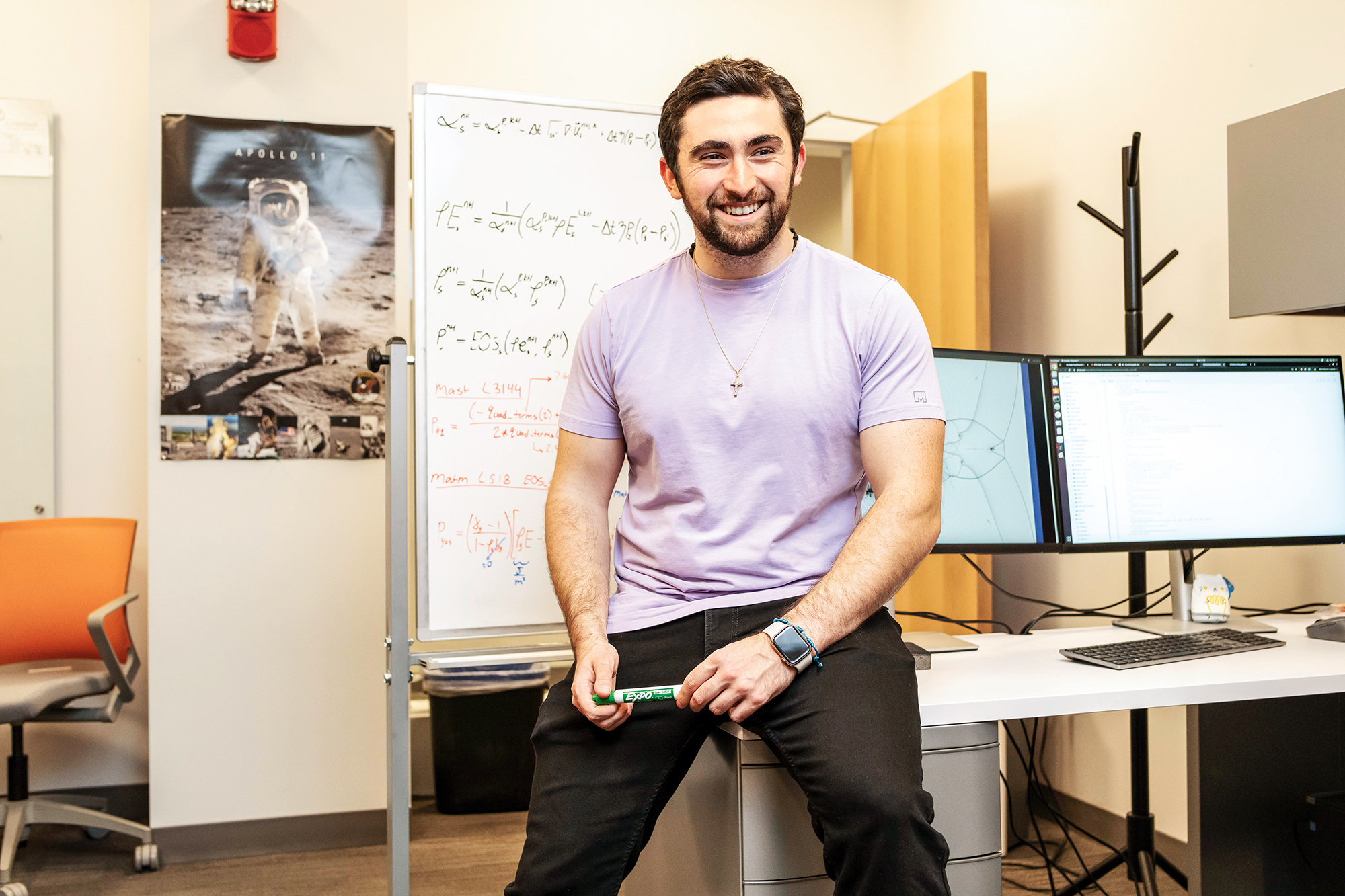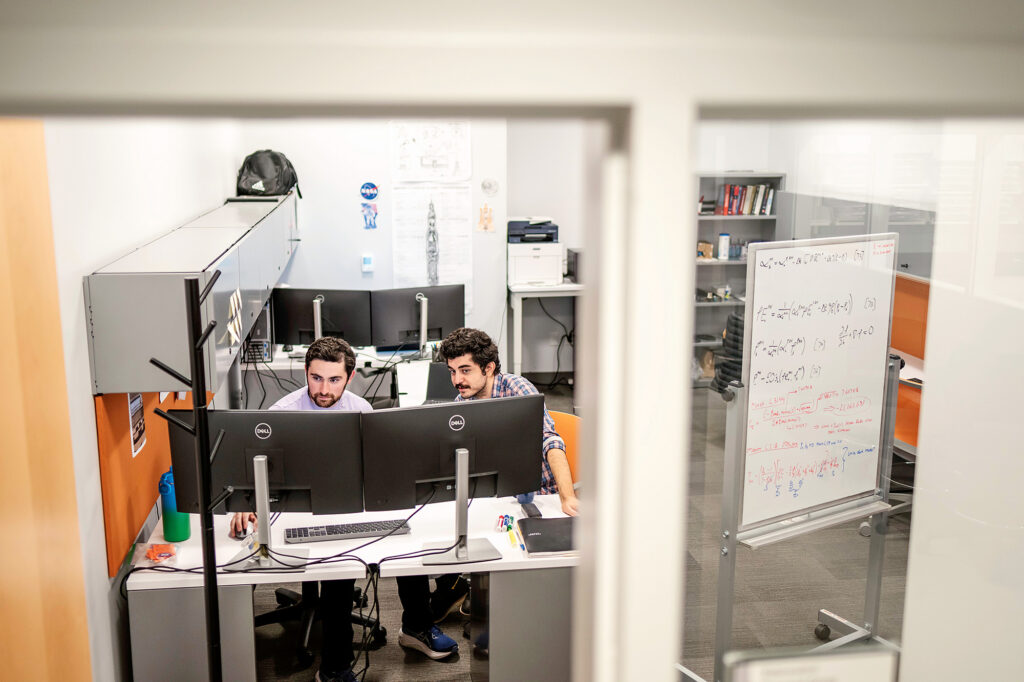Energy Flow

Alumnus Andrew Sayad researches fluid dynamics. (Photo: Karsten Moran)
By Kenna Caprio
Andrew Sayad, BS’22 (Metro), a doctoral student and PhD candidate at Stevens Institute of Technology, researches fluid dynamics.
He credits Wonjae Choi, FDU associate professor and program coordinator of mechanical engineering and mechanical engineering technology, with sparking his interest in this field.
“Fluid dynamics has so many applications. It’s used in the prediction of weather, in biomechanics — for instance, in studying blood flow to the heart — and in aircraft design. I work in the aerospace sector, looking at airflow over aircraft. We have a set of equations that describe the motion of fluids, and to solve those equations, we use experimental or computational methods.”
Currently, Sayad is trying to understand what kind of damage water or rain droplets traveling at a high speed can cause an aircraft.
“Because hypersonic aircraft travel so fast, any impact with a particulate, including droplets, could cause significant damage. Once we have a better understanding of this, engineers will be able to design aircraft that can resist or minimize this damage.”

“I’ve always kind of liked puzzles, working with my hands and building things,” Sayad says. (Photo: Karsten Moran)
It’s an appealing field for Sayad, who likes the challenge and the satisfaction that comes with the work. “Most people see science and math as very rigid and structured, but that’s far from the truth. You have to think outside of the box; we run a lot of simulations and sometimes those simulations don’t necessarily work the way we expect. We need to be creative as we design experiments and simulations. And if they don’t work, we need to go back and figure out what went wrong.”
Figuring out engaging ways to present their findings — be it a cool visual representation of the data at a conference or using less technical language in an academic paper — is another way engineers must get creative.
As an undergraduate student at FDU, Sayad conducted research alongside another mentor, Christopher Stubbs, assistant professor of mechanical engineering and mechanical engineering technology.
The two examined the structural integrity of cornstalk cells. “A big problem in the agriculture industry is crops falling over from high winds or other bad weather. It’s a waste of food and money when those crops are lost,” says Sayad.
They worked together to develop an image processing algorithm. “We created computer models to run simulations and look at the different type of stresses inside those cells. From there, we could determine at which point the cells fail and cause the cornstalk to fall over. Then we pass that information to biologists who can genetically engineer the cornstalks so that they’re stronger and don’t break or fall over as easily.”
Eventually, they published their research, “The Semi-automated Development of Plant Cell Wall Finite Element Models,” alongside other contributors, in the scientific journal Plant Methods.
“Engineering is the kind of field where there isn’t always just one answer,” says Sayad. “Sometimes, with a little bit of creative thinking or by seeing another perspective, you can find a solution, or a pathway to a solution, that’s more efficient or simpler. And that’s so important.”